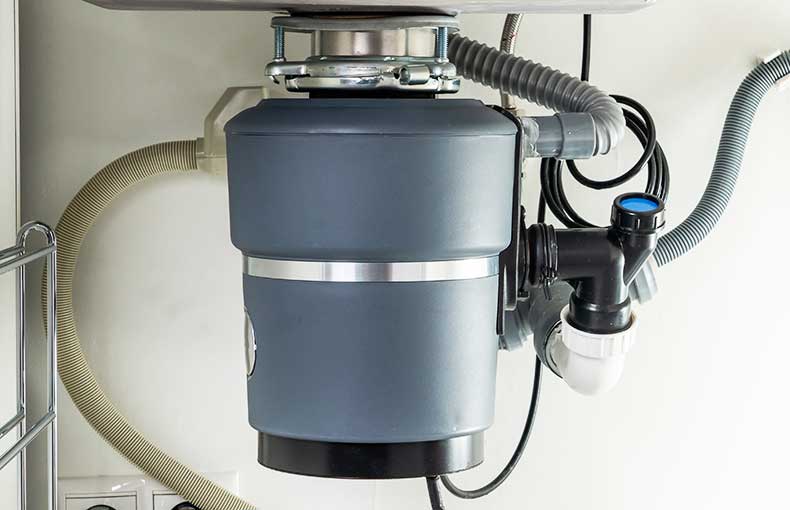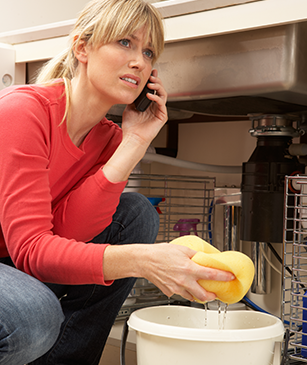Just how do you actually feel in regards to How to fix a pretty consistent leak from my garbage disposal?

Waste disposal unit are necessary cooking area devices that assist in dealing with food waste efficiently. However, a dripping waste disposal unit can be an aggravating and messy problem to handle. Thankfully, numerous leaks can be fixed conveniently with a few straightforward steps. In this short article, we will go over just how to deal with a dripping garbage disposal properly.
Introduction
Waste disposal unit are installed under kitchen area sinks and are designed to shred food waste into smaller sized pieces, enabling it to pass through the pipes system conveniently. While these tools are typically trusted, leaks can happen gradually as a result of damage, loosened connections, or damages to the unit.
Step-by-Step Guide to Repairing a Leaking Waste Disposal Unit
Switch off the Power
Prior to attempting any kind of repair services, ensure that the power to the garbage disposal device is turned off to avoid the danger of electrical shock.
Situate the Leak
Recognize the exact location of the leakage and determine the reason
Tighten up Connections
Use a wrench to tighten any kind of loose connections in between the disposal system and the plumbing system.
Change Seals or Gaskets
If the leakage is because of worn seals or gaskets, get rid of the old elements and change them with brand-new ones.
Patching Cracks or Holes
For fractures or holes in the disposal device, use epoxy or an ideal patching material to secure the broken location.
Determining the Resource of the Leak
Before trying to deal with a dripping waste disposal unit, it is important to determine the source of the leakage. This can typically be done via visual examination or by performing easy tests.
Visual Assessment
Evaluate the garbage disposal system thoroughly for any indicators of water leak. Pay very close attention to locations around seals, gaskets, and connection factors.
Examining for Leaks
One method to test for leaks is by running water via the disposal unit and checking for any visible indicators of leakage.
Usual Reasons For Leaks in Trash Disposals
Worn Seals and Gaskets
Seals and gaskets play an important duty in stopping water from dripping out of the waste disposal unit. With time, these parts can degrade, causing leaks around the disposal device.
Loose Links
The connections in between the garbage disposal and the pipes system can end up being loose over time, creating water to leak out throughout operation.
Splits or Openings in the Disposal Device
Physical damage to the garbage disposal, such as fractures or holes in the housing, can also cause leakages.
Tools and Products Needed for Repairing a Leaking Waste Disposal Unit
Before starting the repair procedure, gather the essential tools and products, including a screwdriver, adjustable wrench, plumbing professional's putty, substitute seals or gaskets, and epoxy or patching material for fixing splits or holes.
Testing the Waste Disposal Unit After Repair
As soon as the repair work is full, check the garbage disposal by running water through it to ensure that the leakage has actually been solved.
Preventive Maintenance Tips to Stay Clear Of Future Leaks
To prevent future leaks, it is vital to execute regular maintenance on your waste disposal unit. This includes maintaining it clean, staying clear of putting non-food items or tough items down the disposal, and periodically looking for leaks or various other issues.
Verdict
In conclusion, fixing a leaking waste disposal unit is a relatively simple procedure that can be finished with basic tools and materials. By following the steps detailed in this write-up and exercising preventative upkeep, you can maintain your waste disposal unit in good working problem and stay clear of pricey repair work in the future.
HERE’S HOW TO FIX YOUR GARBAGE DISPOSAL
WHAT TO DO IF SOMETHING IS STUCK IN YOUR GARBAGE DISPOSAL
If the impeller won’t turn, there’s probably something stuck in the disposal. It could be a steak bone or peach pit, although plumbers report pulling all sorts of inappropriate objects out of disposals, such as bottle caps or aluminum foil. Make sure power to the disposal is off, and look inside to see if you can see the source of the jam.
Never stick your fingers in a disposal. Pull out anything you see with tongs or pliers.
If the disposal still won’t work, it may be time to call a plumber or consider buying a new disposal. GEM Plumbing & Heating is here for all of your garbage disposal needs.
WHAT TO DO IF YOUR GARBAGE DISPOSAL DRAIN IS CLOGGED
Take everything out from underneath your sink and put a bucket or other container under your disposal to catch any water that drains out. Disconnect your disposal from the power supply. If it’s plugged into a wall outlet, unplug it. If it’s hardwired into an electrical box, go to the electrical panel and turn off the breaker for the disposal. Pour ¼ cup of baking soda into the drain, followed by ½ cup of white vinegar. Give the solution a few minutes to fizz and do its work. Look into the disposal with a flashlight to see if you can see an object that might be causing the clog. If you see it, remove it using tongs or pliers. MORE TIPS ON DEALING WITH A CLOGGED GARBAGE DISPOSAL
Never use drain cleaner in a garbage disposal. It can damage the plastic parts inside the disposal. You can also be splashed with the caustic liquid while working to clear the clog. Beware! Never stick your fingers into a garbage disposal. Trust us — not a good idea. In many instances, your dishwasher drains through your garbage disposal. This allows the disposal to grind any large food particles that may be drained out of your dishwasher. There are some jurisdictions, however, where the plumbing code prohibits such a connection. WHAT TO DO WHEN YOUR DISHWASHER DRAINS THROUGH THE DISPOSAL
Run some water in the sink so your plunger has at least a ½-inch of water to create a seal and plunge vigorously up and down several times. You may need to repeat this several times. Run hot water down the drain to clear any residue that remains.

I was introduced to that article about Why Is from a friend on another web address. Enjoyed our write-up? Please share it. Help somebody else check it out. Thanks a lot for taking the time to read it.
Click Here